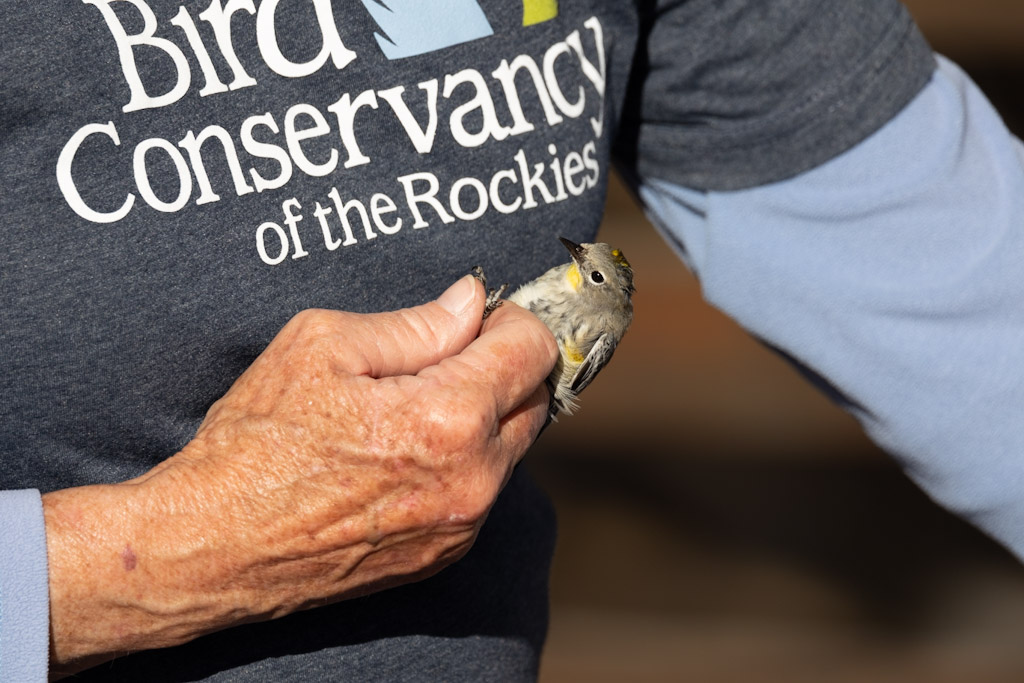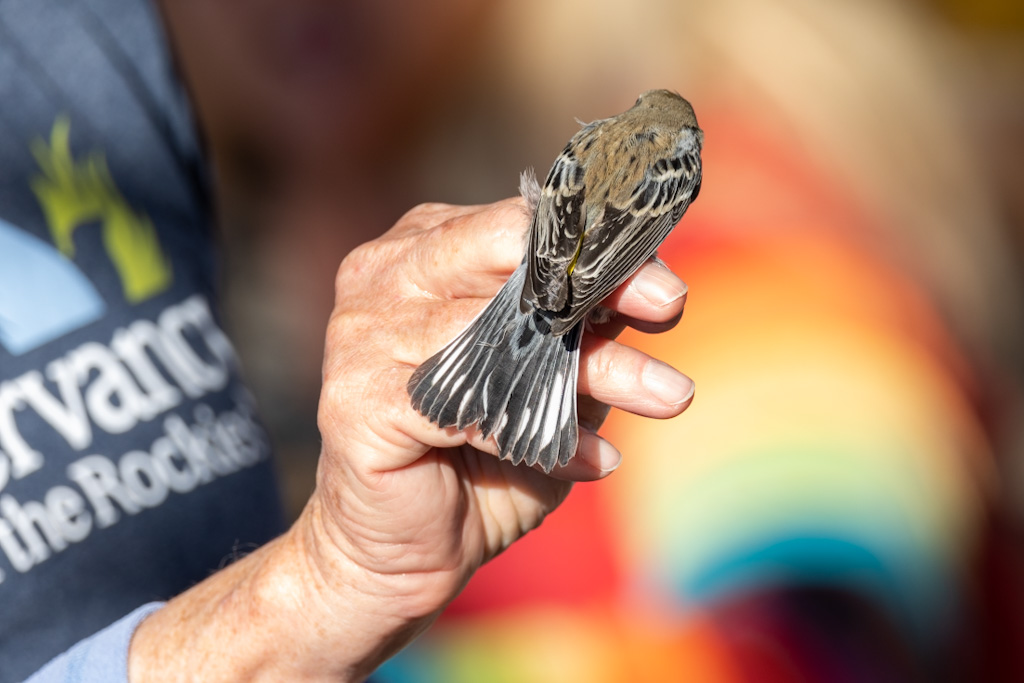The morning after landing in Denver, Colorado, I woke up early and headed out to visit Barr Lake. I used eBird to locate this lake as a good spot to find Bald Eagles, a bird I’ve always wanted to see in person.
I rolled up to the entrance post and talked to the woman at the window. When I told her I was there to see Bald Eagles, she lit up and gave me directions on some places around the lake I could check out and handed me a map.
With my gear in tow I walked in the direction of the footbridge and noticed a tent for Bird Conservancy of the Rockies. They informed me about their organization and that there was a bird banding station nearby. Future volunteers can sign up here to help out in the bird banding stations in Colorado and Nebraska. They also reassured me that I would definitely see the Bald Eagles since they are basically permanent residents. I had thirty minutes to spare until their next banding time slot so I trekked off over the bridge in hopes of eagles.
Eagles?
Walking on the lake path, a large blotchy brown raptor flew closely overhead. I believed it to be my first Bald Eagle–an immature one! I hastily snapped a few blurry photos. That was quick!
Around Barr Lake are a few observation platforms, a wildlife observation blind, horse trails, and more. The footpath led me around the lake to the first platform, which was more of an elevated walkway. From there I could see across the mostly dried-up lakebed where Canada Geese and California Gulls speckled the distant shores.
I looked closely at the loose bunches of birds standing on the shore, among those I spotted two larger figures. Comparing what I could see with my binoculars and capture with my camera, the gleaming white heads and dark bodies of Bald Eagles #2 & #3 were obvious.
With my 30 minutes almost to an end I headed back to the bird conservancy tent and we went the other direction to the bird banding station.
Roles and duties of a bird banding station
Net monitoring and bird retrieval
Mist nets are fine, gentle nets that are set up by scientists to collect birds. These nets are frequently monitored throughout the day to minimize the time any birds spend in the net.
Once a bird is removed from a net, it’s put into a small soft cloth bag and walked back to the banding station.
Bird handling, measurement, and banding
An individual in the station will remove the bird from the bag using safe handling techniques to minimize risk to the bird. The bird is then measured in various ways such as: wing length, feather collection (for DNA), age approximation (see more below) and weight. The weighing is done by sliding the bird into a tube and weighing them together and subtracting the tube weight.
The bird’s leg is measured for band size and the scientist uses a specialized tool to safely put the band on.
Record keeping
There are many notes and measurements to capture for each bird so a person is dedicated to recording and organizing all of this information.
Education and demonstration
A group of children arrived back from the nets excited to learn more about the two birds that were collected. The leader gave an educational demonstration and started by reaching into the bag to reveal a Yellow-rumped Warbler. She talked about the importance of understanding the origins of these migrating birds.
Fun facts
- The Yellow-rumped Warbler originates primarily in Alaska and Canada. DNA collected from feathers helps paint a clearer picture of where these birds were originally from and the banding helps show where they go.
- Migrating birds often undergo the journey in several legs by putting on extra weight at the beginning to serve as fuel for long flights. Each time a leg is completed the process of weight gain begins again before departure.
- Songbirds tend to migrate during the night.
- Young and fledgling birds tend to be duller in color to attract less predators.
- To approximate an age of a bird water is used to look between the feathers at the bird’s skull to see the level of calcification.


The demonstration concluded with the presenter putting the warbler onto a girl’s open palms. The warbler quickly righted itself and flew away to the amazement of the audience.
Through all the people I talked to this weekend, it seems that the best places to bird around Denver, Colorado are:
- Barr Lake
- Cherry Creek State Park
- Rocky Mountain Arsenal National Wildlife Refuge
- Chatfield State Park




